You can use something like this: String[] items = line.split(";");
Consider the below example for better understanding:
Let's assume that you have a file named “data.txt” located in your hard drive (say “C:/Users/sarath_sivan/Desktop”) which contains your records something like this:
12345678;ABC 123456A12345678;45678945
12345678;ABC 123456A12345678;45678945
12345678;ABC 123456A12345678;45678945
12345678;ABC 123456A12345678;45678945
12345678;ABC 123456A12345678;45678945
12345678;ABC 123456A12345678;45678945
12345678;ABC 123456A12345678;45678945
12345678;ABC 123456A12345678;45678945
12345678;ABC 123456A12345678;45678945
12345678;ABC 123456A12345678;45678945
And you would like to ignore white space while scanning with java.util.Scanner class.
First, we can create a model class to holds your data. You can use something like this:
package com.stack.overflow.works.model;
/**
* @author sarath_sivan
*/
public class Data {
private String column1;
private String column2;
private String column3;
public Data() {}
public String getColumn1() {
return column1;
}
public void setColumn1(String column1) {
this.column1 = column1;
}
public String getColumn2() {
return column2;
}
public void setColumn2(String column2) {
this.column2 = column2;
}
public String getColumn3() {
return column3;
}
public void setColumn3(String column3) {
this.column3 = column3;
}
}
Next, we can create an interface for the scanning purpose.
package com.stack.overflow.works.service;
/**
* @author sarath_sivan
*/
public interface Scannable {
abstract public void scan();
}
Next, we can implement the business logic by creating a new class which implements the interface
package com.stack.overflow.works.service;
import java.io.File;
import java.io.FileNotFoundException;
import java.util.ArrayList;
import java.util.List;
import java.util.Scanner;
import com.stack.overflow.works.model.Data;
/**
* @author sarath_sivan
*/
public class FileScanner implements Scannable {
private static final String SEMICOLON = ";";
private static final String TAB_SPACE = "\t";
private static final String FILE_NAME = "C:/Users/sarath_sivan/Desktop/data.txt";
@Override
public void scan() {
File file = new File(FILE_NAME);
Scanner scanner = null;
List<Data> recordList = new ArrayList<Data>();
Data data = null;
try {
scanner = new Scanner(file);
while (scanner.hasNextLine()) {
String line = scanner.nextLine();
String[] items = line.split(SEMICOLON);
data = new Data();
data.setColumn1(items[0]);
data.setColumn2(items[1]);
data.setColumn3(items[2]);
recordList.add(data);
}
displayRecords(recordList); /*Displaying your records*/
} catch (FileNotFoundException e) {
e.printStackTrace();
}
}
private void displayRecords(List<Data> recordList) {
System.out.println("*DISPLAYING YOUR RECORDS:*");
System.out.println("COLUMN1" + TAB_SPACE + "COLUMN2" + TAB_SPACE + TAB_SPACE + "COLUMN3");
for (Data data: recordList) {
System.out.println(data.getColumn1() + TAB_SPACE + data.getColumn2() + TAB_SPACE + data.getColumn3());
}
}
}
Finally, we can create a service or test class to verify the logic.
package com.stack.overflow.works.main;
import com.stack.overflow.works.service.FileScanner;
import com.stack.overflow.works.service.Scannable;
/**
* @author sarath_sivan
*/
public class ScannerService {
public static void main(String[] args) {
Scannable fileScanner = new FileScanner();
fileScanner.scan();
}
}
Now, you can run the ScannerService class which produce the output something like this:
DISPLAYING YOUR RECORDS:
COLUMN1 COLUMN2 COLUMN3
------------------------------------------
12345678 ABC 123456A12345678 45678945
12345678 ABC 123456A12345678 45678945
12345678 ABC 123456A12345678 45678945
12345678 ABC 123456A12345678 45678945
12345678 ABC 123456A12345678 45678945
12345678 ABC 123456A12345678 45678945
12345678 ABC 123456A12345678 45678945
12345678 ABC 123456A12345678 45678945
12345678 ABC 123456A12345678 45678945
12345678 ABC 123456A12345678 45678945
You can see the package structure here 
Hope this helps.
Thank you!
